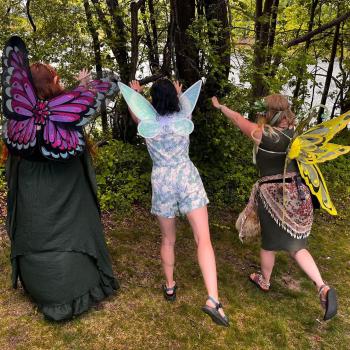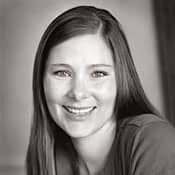After I encountered a fifth or sixth recommendation, I finally dove into the television series Downton Abbey, originally produced for ITV in Britain, aired here on PBS earlier this year, and now available to stream on Netflix. The series is set in Edwardian England at the titular manor house where Lord Grantham and his American heiress wife live with their three marriageable daughters and a phalanx of servants, each, as you can imagine, with his or her own drama, and all invested in the uncertain future of the estate. The show is eminently watchable: a pop sensibility infuses its occasionally too-ripe editing, and plotting is fast-paced (especially with the help of that persuasive "next episode" button). If you're looking for one last recommendation before you too dive in, you've found it.
Unlike the Austen or Dickens adaptations that are the bread and butter of period fare, Downton Abbey is a thoroughly contemporary creation, conceived and written by Julian Fellowes and owing more to its modern screen predecessors like Upstairs, Downstairs than to Mansfield Park or Bleak House. Fellowes justifies some of the resulting anachronism narratively: we are introduced to Downton through the eyes of Matthew Crawley, a modern, middle-class lawyer who has unexpectedly learned that he is heir to his long-lost third cousin, Lord Grantham. His growing understanding of the estate and its role in the community is pretext for the series' pervasive thematics of transition: the house, for example, is only partly wired for electricity, as nobody could see any use for electricity in a kitchen. This modern perspective, Matthew's and Fellowes'—and ours, naturally—always informs and occasionally distorts the action of the story. We are never allowed to see the legal entanglements that prevent the oldest daughter, Lady Mary, from inheriting the estate as anything but unjust, sexist absurdity. Fellowes does not understand patriarchy, and as a result the series is almost entirely blind to its legitimate meaning and uses in an only-partially-modern world.
What Fellowes does understand, and very well, is the social structure of the great English manor house and the institution of service that sustained (and was sustained by) it. In this sense, Downton Abbey draws on the traditional figure of the manor house in the English literary imagination, from Penshurst to Howard's End to Brideshead. Fellowes understands how the great house functioned as the material manifestation of the social values of the past and present, and as the anchor for the web of obligation that connected master to servant—and servant to servant—in a relationship much richer than mere transaction. Above all, Fellowes understands the culture of service in a great house, the way in which the rigid and fantastically stratified domestic hierarchy of servants—from butler at the top to scullery maid at the bottom—mirrored the rigid and fantastically stratified dynastic hierarchy of their aristocratic employers. When an unexpected noble visitor disrupts the staff's usual roles, Lord Grantham notes, "There are worse things happening in the world." The butler Carson replies in genuine horror, "Not worse than a maid serving a Duke!"
This rigid social order was sometimes used to justify horrific abuse, it is true. We see the scullery maid Daisy being subjected to unrelenting verbal violence by the cook, and the second footman mercilessly bullied by the first footman. We see the ways in which the rules of status denied scarce resources like medical care to those low on the ladder. And of course we see how the rigid class system reproduced and reinforced a pervasive snobbery among the poor no less than the rich. This insight—that the servants' order is as stratified, judgmental, and unjust as the aristocrats'—is the structuring observation of the series. The ladies' maid O'Brien, one of the narrative villains but also the most clear-eyed observer of the obligations and privileges of the relationship between master and servant, says with delicious disdain, "I'd rather be a footman than wait on someone who ought to be a footman himself."
But the pecking order is only half the story, and Fellowes understands that, too. If Downton Abbey possesses any value beyond sudsy entertainment, it lies in its exploration of the positive uses of social hierarchy, the ways in which a rigid social order can stabilize and give dignity to lives at all rungs of that ladder. The deep roots of England's class system reach ideological bedrock at what is sometimes called the "great chain of being," an ancient cosmology that was re-purposed and re-cycled across millennia in the Western world. Its central feature is a great hierarchical continuum along which all of creation, from mineral up to angel, exists in its divinely ordained place. Each person fulfills her nature most fully by occupying her proper station, which entails obligation to those both above and below her, and she claims an inherent dignity through the diligence with which she meets those obligations: the glory of one's superiors reflects warmly on oneself, just as one's own quality reflects on those below. Identity is always relational; salvation is always relational.





